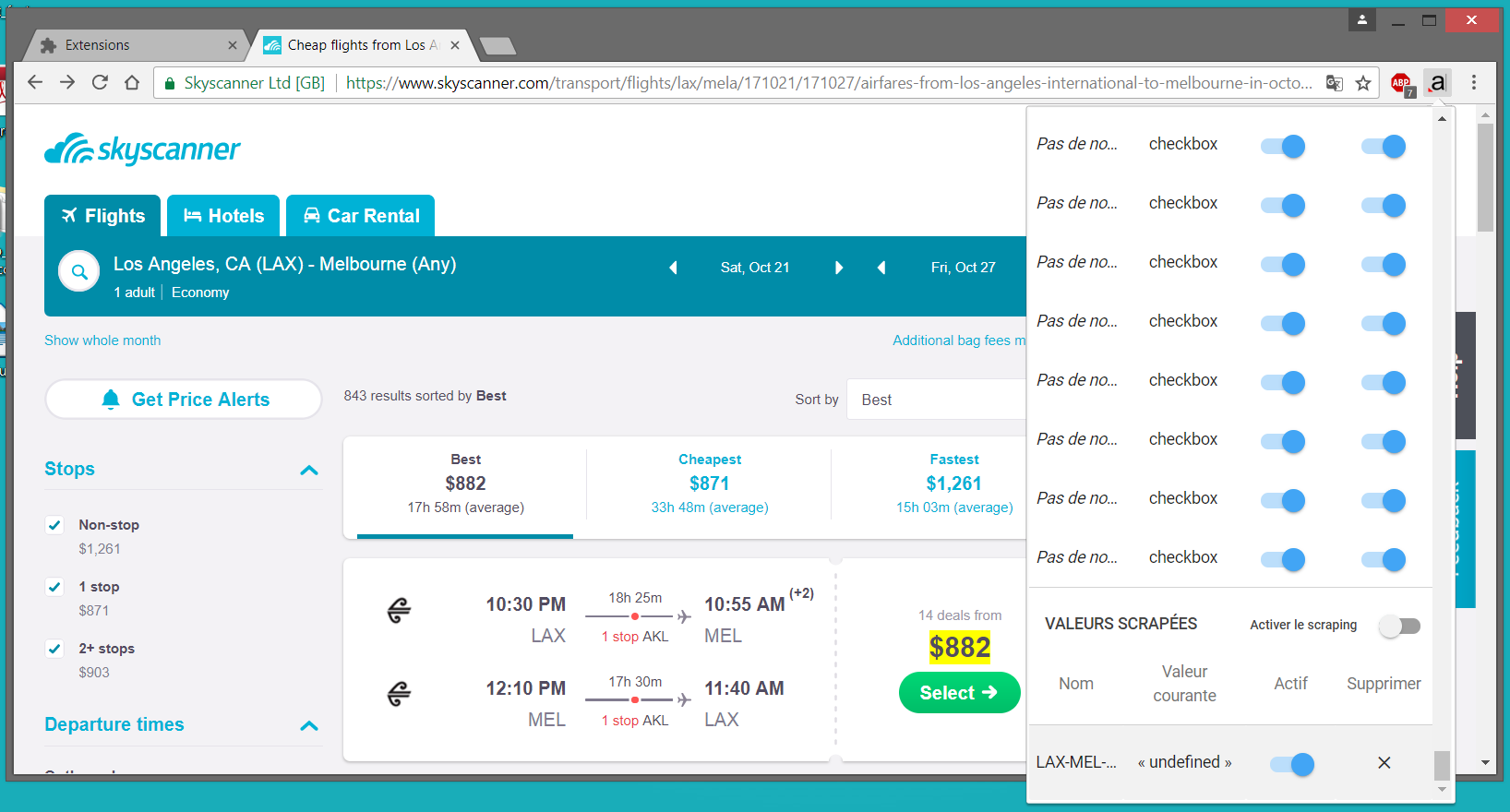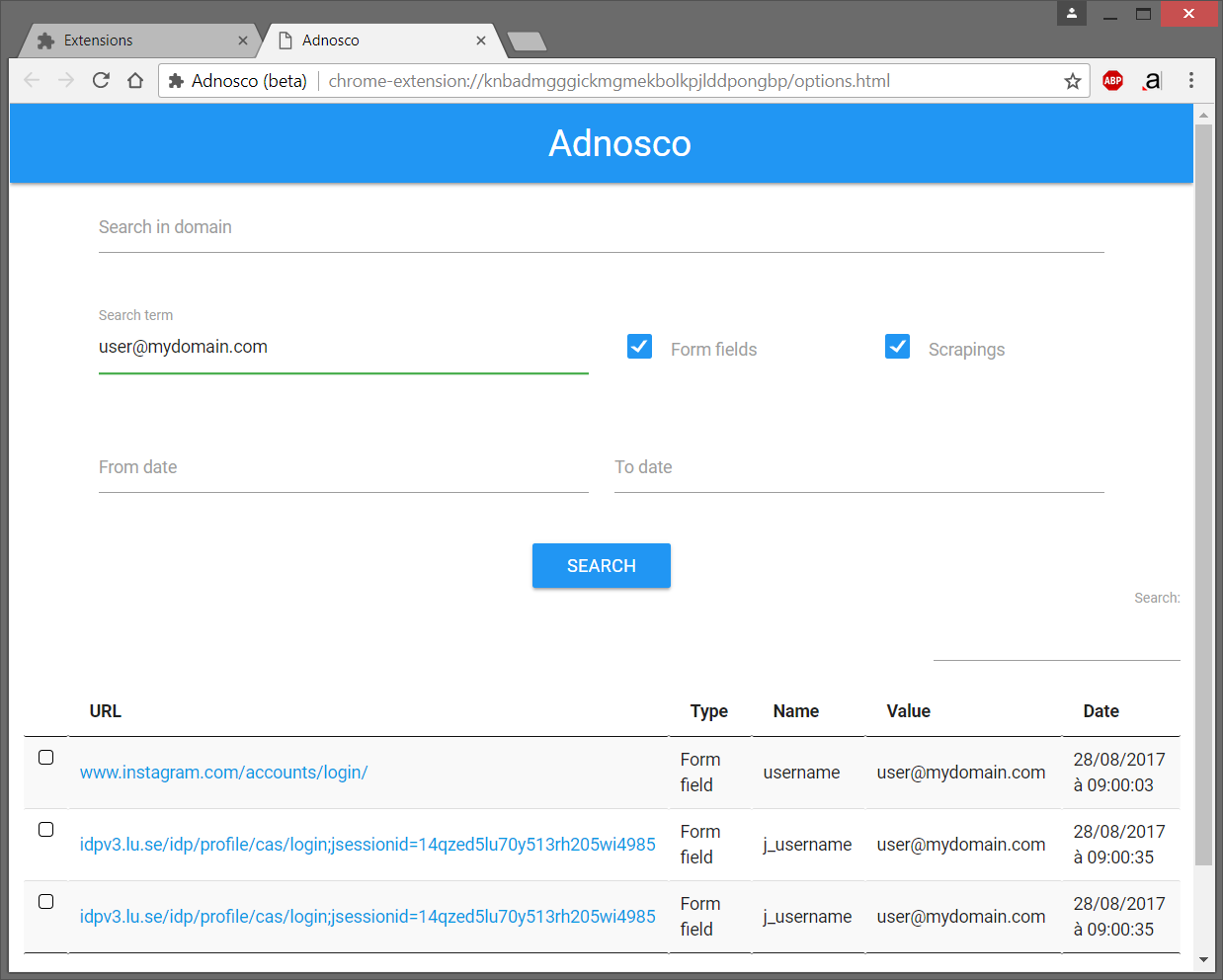Outils pour utilisateurs
Panneau latéral
Table des matières
Adnosco's Scenario
Restoring a form after a reset
Let’s say the user needs to fill a form on a website. The form is quite long and requires to fill some complicated data spread on multiple fields, checkboxes and other fields. Let’s now suppose that the user has to suddenly leave their computer, and thus leave the form incomplete. When they come back a few minutes later, they fill the remaining fields of the form, but an error occurs when they submit it: the session has expired, and upon return to the page where the form is located, all the data is gone.
Luckily, should the user be using Adnosco, all they have to do is head to the “restoration” tab of the control panel (which can be accessed by clicking on the Adnosco icon, in the toolbar of the browser). A line corresponding to the date when the form was submitted has appeared, and the user simply has to click it to restore all the values that were lost on submission a few moments earlier.
Watching over the price of a flight
It is believed that the price of a specific flight may vary over time, and not be the same if one searches for a flight one had already took a look at a few days earlier. The scraping function of Adnosco can help with keeping track of prices. Say a user visits Skyscanner to find a flight from Los Angeles to Melbourne. Adnosco allows the user to define a scraping on the zone of the page containing the price. The value of this zone will now be saved on every visit.
If the user wants to check if the price has changed at all a few days later, they can simply head over to the “restoration” tab of the control panel, and hover all the lines to preview the value extracted by the scraping on each visit: the old price will be shown instead of the new, currently displayed price, allowing the user to compare them and see if the price has changed or not.
User data search through the search interface
It can be easy to forget which information one has given to which website. Which email address did I use to log on that website? Which domain knows my real name? Using the search interface included in Adnosco (accessible by clicking the magnifying glass icon in the control panel) can help you retrieve these information. For instance, let’s say a user wants to find on which website they have used they email address “user@mydomain.com”. They can enter this email address in the “search term” for Adnosco to return a list of all the saved data matching this email address.




